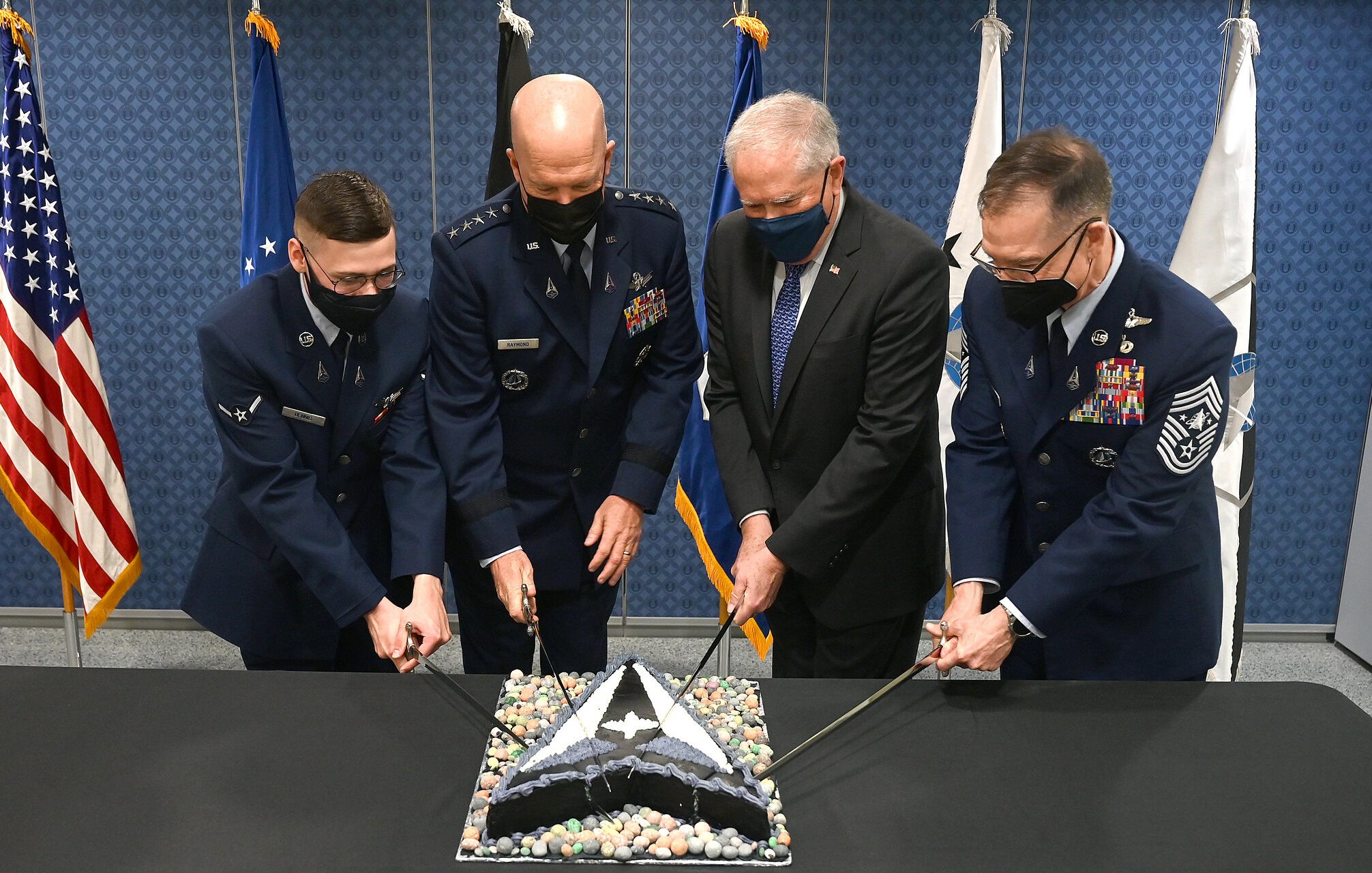Lt. Gen. Armagno: ‘We are no longer the subject of jokes of year one’
WASHINGTON — On the second anniversary of the U.S. Space Force, officials are calling attention to its accomplishments as well as looming challenges posed by Russian and Chinese anti-satellite weapons.
The Space Force, an independent military service under the Department of the Air Force, was signed it into law Dec. 20, 2019. Over the past two years its ranks have grown to more than 6,500 uniformed members known as guardians, and about an equal number of civilian employees charged with operating and protecting the U.S. military’s satellites and supporting systems.
Lt. Gen. Nina Armagno, director of the Space Force staff, recalled that the service got off to a rough start as the public did not understand why a military branch for space was needed. “I think at first it was a little tough to realize the American people thought we were a joke … thank you Netflix,” Armagno said at a Washington Space Business Roundtable event Dec. 15.
“We decided we had to keep educating and keep talking about Space Force, what it provides, where we’re going in the future, and why it’s so important,” she said.
Armagno suggested that a drumbeat of news reports about China’s technological advances in space and hypersonic missiles, and Russia’s anti-satellite missile test last month provided clear illustrations of the role that space plays in national security. “There’s a lot of strategic competition in space and I think Americans are seeing it,” she said.
“We still have more educating to do, and we definitely want to bring Americans in and explain the threats we’re seeing,” Armagno added. “I don’t think we are the subject of the jokes from year one. So I think we’re making some pretty good progress.”
Undersecretary of the Air Force Gina Ortiz Jones said a top priority for the Space Force is to “understand what we need to do to protect our satellites and other capabilities in space that support all the other services.”
“Our competitors have done their homework and they know just how reliant we are on space as a nation. They know space enables the economic and military power of our nation,” she said at a U.S. Chamber of Commerce event Dec. 16.
Ortiz Jones noted that Air Force Secretary Frank Kendall wants to see the Space Force “get space right” as far as acquisitions of new systems are concerned. “To sustain our advantages we’ve got to move faster than our competitors,” she said.
Being a small organization — the Space Force is about one-tenth the size of the next smallest branch of the armed forces, the U.S. Marine Corps — can be an advantage in the Pentagon, said Ortiz Jones. “The Space Forces is new, and the bureaucracy isn’t fully baked into every process, luckily, and we’ll work hard to make sure it doesn’t get baked in.”
Looking to shift the culture
The main jobs performed by the Space Force — operating satellites, tracking objects in space and managing the nation’s space launch ranges — for decades were done by the U.S. Air Force.
The nature of those tasks has not changed but operations are now more “mission focused,” said Col. Miguel Cruz, commander of Delta 4, the Space Force unit that operates missile-warning satellites.
“By virtue of being a little bit flatter, it’s much faster to get to decision making,” Cruz said Dec. 17 at a Mitchell Institute forum. Under the previous Air Force structure, any organizational or process change would have had to go through several echelons of decision making, said Cruz.
Another benefit of being a separate service is cultural, “more of an identity thing,” said Cruz. “The space operator now sees himself and herself not only as having his or her own service, but the fact that they are now called upon to be warfighters. Not merely space operators providing a service but actually warfighters that defend the nation against strategic attack or theater missile attack as is in my case.”
Col. Matthew Holston, commander of Delta 8, the unit that operates communications and PNT (positioning, navigation and timing) satellites, said the biggest shift has been the “focus on the threat.” He said he had not seen that during his more than 20 years of service in the Air Force.
“We made a deliberate decision to change our operations support squadrons to combat training squadrons, and focus not just on what we do on a day to day basis, but focus on what does it truly mean to do navigation warfare to protect and defend that PNT signal?” Holston said.
The Space Force has to operate in a “contested environment,” he said. “And that means recognizing that space combat power is a critical enabler for our nation. And our adversaries are trying to take that away.”
Col. Robert Long, commander of Space Launch Delta 30, the unit that manages West Coast launch operations, pointed out that the Space Force, despite its autonomy, remains hugely dependent on its parent service. “We can’t do our job without the Air Force and airmen.”
